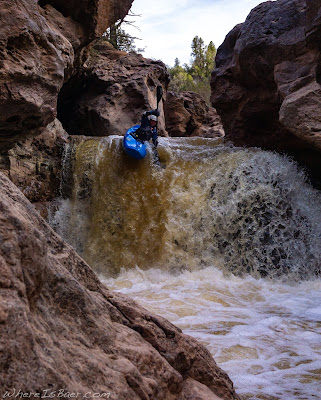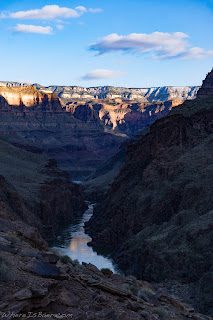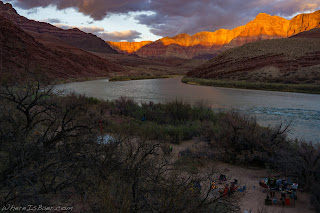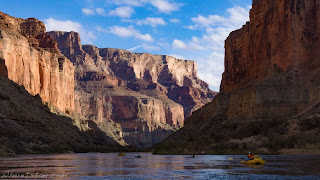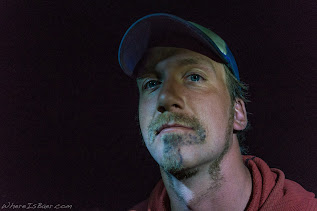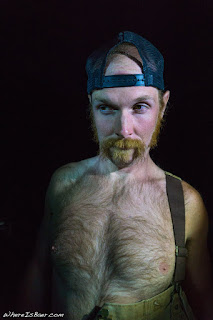Exploration via Kayak: The Why, Where, and What’s Next?
The whitewater kayaking community, as we know it, is still relatively young. Most of the people that pioneered your favorite local river are still alive today. Paddling all over the country and globe, I have had the opportunity to meet and chat with many of these pioneering paddlers. As an avid expedition paddler my conversations quickly turn to sharing epic tales, and aspirations for what is next.
In this article I have reached out to a variety of folks that have inspired me to explore. The questions are simple, yet every paddler returned with wildly different responses. Except for one… the map!
Why explore, why leave your comfort zone?
First off, “comfort zone” might not be the best wording,“Comfort zone means so many different things. To some it’s working 80 hours a week on a drill rig.”
Ben Stookesberry.
Ok Ben, we get it. Everyone I reached out to in this article would be considered crazy by many. Many on this list would also consider working 40-80 hours a week and spending few moments outside crazy. Neither is correct, and we all pick and choose our priorities wildly differently. So, maybe a better phrasing is, where does that push, that drive to explore come from? More than a few paddlers seem to think it’s embedded in their psyche, something they were born with or drawn to naturally.
“As far as exploring, I think it’s a natural reaction to want to explore, and some of us have a desire to get out and see even more. Seeing rare earth and whitewater is amazing and putting together a trip successful or not is one of the most satisfying feelings I’ve ever had. It’s pure love. And being able to share that with friends is what it’s all about. Most people don’t quite get it and I usually don’t even try to explain, but those who know, know.”
Thomas Herring
I explore because the desire to find the next challenge is always there. There are always new places to discover and the thrill of the unknown creates a sense of adventure that is an unmatched feeling for me while paddling. Kayaking is a sport that can encompass so many things that can be enjoyed in such a variety of ways. 30 years after I started, I am still fueled by the drive to try something new and difficult, whether it is a new river or a new line on a rapid I have run countless times.”
Bobby Miller
“The whitewater kayak is this tremendous opportunity to go places that you wouldn’t or couldn’t go for any other reason or by any other means. It is a hypothetical ticket to the ubiquity that rivers represent on this planet. And so to relegate ourselves to only the well known rivers where the experiences are mostly prescribed is to miss out on the pinnacle opportunity that is facing the unknown.”
Ben Stookesberry
“Exploration is just a physical response to curiosity. It is really no different than wanting to try something new on a restaurant menu, or rather than just wondering why the sky is blue, taking the time and effort to research it. In my case, the object of curiosity is geography, and more particularly rivers. I have always been drawn to waterbodies and the desire to be by them or on them, and for rivers, to follow them. In short, I just want to personally see what is there.”
Ed Gertler
“In the ‘70s I was in Big Bend, TX, and it’s just beautiful. It was my first time seeing whitewater, and I had the quick realization I could explore via the river.”
Eric Lindberg
Is this drive to peer around the bend natural? Or is it simply the means that allows us to spend an extended period of time in remote places we find beautiful? Yet others talk about the desire to problem solve. Expedition paddlers typically spend countless hours looking at maps, setting up travel logistics, and scouting rapids. Is this what we find so enjoyable?
“Exploration by kayak has got to be my favorite aspect of the sport. A kayak on a river makes huge landscapes so accessible in a way that no other mode of transport does. You can live out of it for days, even weeks at a time. On many a good river the flow will carry you through the landscape without much effort. Having a guide is nice for expediency, but I love the feeling of solving each bend in a river with a group that is all new to a place. There's nothing quite like it. Maybe it's one incredible image that will draw me to a place, but it's all the rapids that aren't in the image, all the incredible views of the looming mountains framed by the canyon, the animals whose paths you invariably cross that make up a true experience of exploration.”
Evan Stafford
“The drive to explore via my kayak comes from the fantasy of being in a place where very few have probably ever been. It’s pretty thrilling to be in an untouched area when you know how busy the rat race is outside of those canyon walls. Many first descent rivers are remote and require lots of logistics as well as critical thinking to navigate and it’s these challenges that are appealing to me.”
Shannon Carroll
Shannon brings up the idea that even though exploring is stressful, it often can be a vacation compared to the stress our daily life puts on us. Darcy goes yet a step further referring to it as an escape.
“It’s a great escape. As we all know, life is stressful and full of problems. Exploring remotes areas is a way to forget about a certain set of problems and embrace a new set namely survival which I often find refreshing to just worry about the basics. It makes you really focus on what is important and to learn to let the rest fall away. To suffer, I get worried when I get too comfortable and life is too easy. Getting out there and experiencing physical and emotional suffering (and hopefully rising above this suffering) makes me feel good.”
Darcy Gaechter
 |
"Is it not our nature to peer around the corner? To fixate upon the horizon where the limits of our vision and the birth of our imagination intersect, is to honor in a single instant, all that has come to pass, all that will be, and what it means to be right here, right now."
Kirk Eddlemon
“I know I’m going on an adventure when I commit to something, somewhere unknown to me. A new door I step through. Before going forward, I think: what to take? What could help if things get complex? Less stuff but the right stuff? The warm, the light and the bright stuff? I’ve learned to know I’ll never know until I go but must react as it happens. The adventure of stepping through invisible doors to emerge home new and safe. Learning living and loving this life is why I must go."
Ed Lucero
"I personally was looking for rivers with as much variety and difference as possible, and ended up in places where I paid for it. Fortunately I was able to get out of them alive. This extended far into my soloing, but I was happy to have partners too, it's just that some of the runs I couldn't get anybody to go with me. I had a high pain threshold. And the attitude was closely entwined with what I was looking for in paddling, and my goal, which was to integrate every kind of paddling into my style and find rivers that demanded all those techniques - including climbing - to run them. And the aesthetic is: learn to solve your own problems. Be independent. Never take somebody else's word for anything, always test it pointedly to come to your own conclusion. This is a philosophy of independence and competence. Some perception of danger is physical and affects the difficulty, but most of this is purely a psychological barrier that can be overcome by soloing (whether one wants to do this is another thing altogether). It's probably not advised to push off into an unknown vertical walled canyon like the Tsangpo at 80 grand, or the Stikine at 20K without knowing a lot about what's downstream. But it all comes down to having the people embrace making decisions based on their own experience and outlook. I found in my own paddling that I was willing to push far beyond all my partners, and I got massively criticized for it, so I started hiding my runs. Be your own explorer at all times, and make your own decisions.”
Doug Ammons
Yet other paddlers seem to have simply stumbled into exploration. How often do we consciously choose our path?
“Exploring isn’t for everyone and people should enjoy kayaking however it suits them. I didn’t start kayaking to explore it’s just where kayaking took me.”
Mike Ferraro
How and where did you find these unexplored places?
“We had to guess every step of the way, on the basis of watershed size, geology, altitude, similar drainages, etc., and spend a lot of time on the ground scoping things out.”
Doug Ammons
Seems like there may never be a better substitute than being on the ground seeing things firsthand, but it’s the rumors that get us there in the first place.
“Mainly by talking to people and scouring maps. Kayakers are a great source of info, but I’ve also found amazing places by talking to non-kayaking locals about their favorite hikes, places their grandparents used to go, etc…But at least 4 or 5 times a year someone will start taking about a place and I will mentally file it away as a “must check out.”
Darcy Gaechter
“One of my friends would move to a cool new location or there would be a rumor or myth of something being in the region, really a lot of hearsay. Sometimes we just went for a walk with a chainsaw and a map.”
Eric Lindberg
“I used to study topo maps and look for steep streams. I would compile a list and go hike the creeks during low water periods to see if they were worthy. I also received plenty of tips for where steep streams might be located over the years. Three of my all time favorite streams: White Oak Run, Laurel Run (Cheat Canyon trib), and Moore Run, were adventures that were made possible by the beta people gave me.”
Bobby Miller
The only steadfast answer I obtained during this research is that all of these folks are nerds, and love looking at maps.
“I was utterly fascinated by maps and spent hours poring over gas station road maps, dreaming about visiting the places and features they represented. When someone showed me my first USGS topographic map, it was like discovering fire.”
Ed Gertler
“My first explorations were all local, none of my crew had done them, and we didn't know anyone that had, and weren't sure if anyone had. We bought all the topo maps around the Chattooga and started picking them off one by one.”
Shane Benedict
“I used to pore over maps, measure gradients and drainage acreage etc.”
Evan Stafford
“Quarry and Sovern (which flows into the Big Sandy at the put-in) were known to all but regarded as "unrunnable" due to their steep nature. We also bagged the first D on the Upper Blackwater. It had been run before the devastating Election Day flood of '85 but was a portage fest. The river changed dramatically with the flood. We ran it in April of '86 at high water (750cfs) which may still be a high water record. It was super intense and led me to name one of the last rapids "I Can't Take It Anymore, My Nerves Are Shot”. Fikes Creek was one truly found by study of topo maps as it was hidden away.”
Phil Coleman
“I find new sections using Google earth and CalTopo.”
Mike Ferraro
“For info, almost all internet. Google, YouTube, blogs, maps. Sometimes a dry run like hiking or driving around the area can be useful, too. Always good to get eyes on the river.”
Thomas Herring
“At first, we used Exxon road maps to find the rivers; then guidebooks. Usually, a first descent was a creek I'd seen or heard about from someone who thought it would go.”
Charlie Walbridge
“Trips that I have been a part of were always a group effort and derived from simply looking at a topo map and reading gradient lines and then figuring out your approach, since most often there isn’t a road leading directly to the put in.”
Shannon Carroll
Who inspired you?
For some, it’s the pioneers. Although often not really whitewater paddlers, they definitely had the exploration bug,“John Muir”
Eric Lindberg
“Boomer and his partner Sarah constantly inspire me with their Arctic Missions and multi sport tendencies. When I began my career in the late 90’s, Scott Lindgren, the Knapp Brothers, the Kern brothers, Abbot, Ellard, Alardice, were paving the way of modern kayak exploration. I love hearing stories from the olden days before my time of Lars and Chuck, Lesser, Andrew Emmbick, Brits Dave Manby, Mike Jones, Peter Knoles, Mick Hopkinson (the Relentless River of Everest). But I think it’s worth looking beyond all these historic patriarchy to the females that also led the way and are leading the way in our sport. I.e. Mary DeRheimer, Eva Luna, Niki Kelly, Darcy Gaechter (small world), Shannon Carrol, etc. We know they don’t get as much notoriety as guys, in large part because they are generally less ego driven.”
Ben Stookesberry
Many of these adventurers found their friends to be their inspiration. “My friends are my Heroes!”
“The handful of first D's I've had were really led by Phil Coleman- which includes a 667 fpm Quarry Run way back in 1978. Phil was the map and 'new idea' guy. And, of course, he also originally coined the terms "Boof" and "Squirt"- terms still in use today. But, I've never been the front edge of anything like that, it's just not my thing. The guys who do the searching and mapping never get enough credit.”
Jim Snyder
“In my early days, I was inspired by people like BJ Johnson and Clay Wright, who were out running big drops on tiny creeks that few people would ever get the chance to run. The video Falling Down made extreme kayaking so real for me since most of the drops in the video were within reach, only a few hours away in West Virginia. As I got older, I considered dialing it back but then drew inspiration from the big waterfall craze. I saw how much fun guys like Evan Garcia and Pat Keller were having while running huge waterfalls. I knew there was more for me to accomplish in a kayak and I needed to step into that realm.”
Bobby Miller
“Tons of people! For paddlers, Nouria Newman—I think she’s the most bad ass person I know (male or female) I’m constantly impressed by what she is doing. Ben Stookesberry, Chris Korbulic, Scott Lindgren, and Maggy Hurchalla also come to mind. You all probably know the first 3, but Maggy is my 78-year-old bad ass kayaking friend from Florida. She took up kayaking when she was 65 and is still at it now. She’s also a life-long environmentalist fighting against big corporations for what she believes in. What I really appreciate about all these people is how nice they are. Kindness really goes a long way in making an impression.”
Darcy Gaechter
As Darcy points out it’s not always the top tier paddlers that influence us. Sometimes, it’s significantly more personal.
“My dad has always been a huge inspiration for how I live my life. Not because he is a great explorer, but because of the values he instilled in me at a young age; including courage, commitment, and perseverance. “Building character” as he would call it. These are all some of the prominent qualities I’ve brought to the table exploring in my kayak. I’ve looked up to Ben Stokesberry a lot as an explorer.”
Mike Ferraro
“Nobody. I do this just because I like doing it, not because I want to be like somebody else. But I do enjoy the company of similarly driven people and knowing they are out there. Chasing rivers is not exactly a mainstream (no pun intended) pursuit. So, knowing others share your passion at some level is reinforcing, i.e. comforting evidence that you are not completely insane.”
Ed Gertler
Ed never saw someone else holding the proverbial bar. On the other hand Shannon is now inspiring another generation: her daughters.
“Things have changed a lot for me in the past 10 years, as I’ve started my family and become a mom. So currently, who inspires me, is Mariann Saether for continuing to pursue class V paddling. These days I put my energy towards different passions of mine. Obviously, none of us are guaranteed another day on this precious planet and I’m unable to paddle class V Rivers and canyons with the same ease that I used to before being responsible for raising my children. And, it took me a while, but I am at peace with this in my life. I am thankful for the many days of extreme kayaking that I enjoyed and the safety I had during those days, but as we know; kayaking is a particularly dangerous sport and I’m not willing to lay it on the line like I used to. What’s next for me personally is teaching my daughters the ways of river life and sharing with them the magic within the canyons. My father taught me to raft and kayak at a very young age and to have a healthy respect for the river and its power.”
Shannon Carroll
With so much exploration completed what’s next?
For many, it’s the continued quest for another river.“My goals, for now, are to travel to new places outside of the United States to paddle. I have trips to Chile and Norway on the horizon. Working for Calleva’s Liquid Adventures has opened up a whole new world for traveling, instructing, and sharing the stoke for paddling with others.”Darcy and Mike are both changing gears in wildly different directions. Darcy is interpreting familiar material in new mediums, and Mike is taking his cool under fire prowess to its preverbal match.
Bobby Miller
“Labrador, Canada”
Eric Lindberg
“Next Is the Rio Guayas in Amazon Colombia, Lane, Jules and I tried it a few years ago and hiked out. We are going to give it another shot with Rafa Ortiz coming up in December.”
Ben Stookesberry
“Right now I’m exploring the world of book writing and publishing! It’s been an epic journey and scarier and harder than most I’ve done. But I’ve managed to find a publisher—Pegasus Books—and my book, AMAZON WOMAN, is coming out March 3! You can pre-order now."
Darcy Gaechter
“Next on the list for me is becoming a Marine. It will be a new challenge and have lifelong benefits. I go to basic training at the end of January. If I had any advice about kayaking it would be “Always believe in yourself. In reality, it’s all you’ve got. Anything else is a distraction and a weakness. If you hit it going a hundred you’re gonna make it across.” The sport continues to change and "progress" - the ways in which it changes depend strongly on vision, equipment, experience, appetite, social reward, and in some cases, ignorance of consequences.”
Mike Ferraro
“Well, if I had the time, skill, and money, I would love to run every inch of every stream on the planet (not that canals of Mars don’t appeal to me too). But I haven’t lost touch with reality, and I am more than happy to just catch another section of stream, anywhere that I have not seen. There are some places I would particularly like to visit, but really, just covering some new water is good enough. It would be a nice feeling to think I am the first to have the foresight to give some stream a look, and I think in my earlier days, some of my runs probably were first descents. But nowadays, there are enough boaters in enough places that just about anything has been run. No big deal. The joy of discovery is still there.”
Ed Gertler
Exploration allows me to immerse myself in foreign locations and culture, forcing me to adapt, and become acquainted to just a bit more of our amazing globe.
Chris Baer





